Fifty years ago, on June 3, 1965, Ed White performed America’s first spacewalk—giving the country a much-needed space boost and a well-loved space hero. The half-century of extravehicular activity (EVA) that has followed is the legacy of White and the other early pioneers. Here is a look at some of the high points.
March 18, 1965: Alexei Leonov Completes First Spacewalk From Voskhod 2
The first human being to walk in space, the Soviet Union’s Alexei Leonov, floated from his Voskhod-2 spacecraft on the morning of March 18, 1965 and spent just 12 minutes afloat. They were, as it turned out, 12 miserable minutes. His body temperature soared from the exertion, pushing him dangerously close to heatstroke. His spacesuit expanded so much in the vacuum it became difficult to move or even re-enter the hatch. The one sound Leonov recalls most from the experience was his own labored breathing. But a spacewalk—or extravehicular activity (EVA)—had been achieved.
June 3, 1965: Edward White Makes American Spacewalk
Americans were runners-up in the race to walk in space, with Gemini IV’s Ed White performing his EVA more than 10 weeks after Leonov’s. But unlike Leonov, White loved every second of his 23-minute adventure. “I feel like a million dollars,” he exclaimed as he maneuvered around with the aid of a hand-held zip gun. The gun ran out of fuel before the walk ended and one of White’s extra gloves can be seen in the footage floating out of the open cockpit door. Still, when told to come inside he responded, “It’s the saddest moment of my life.”
June 5, 1966: Eugene Cernan’s Un-Excellent Adventure
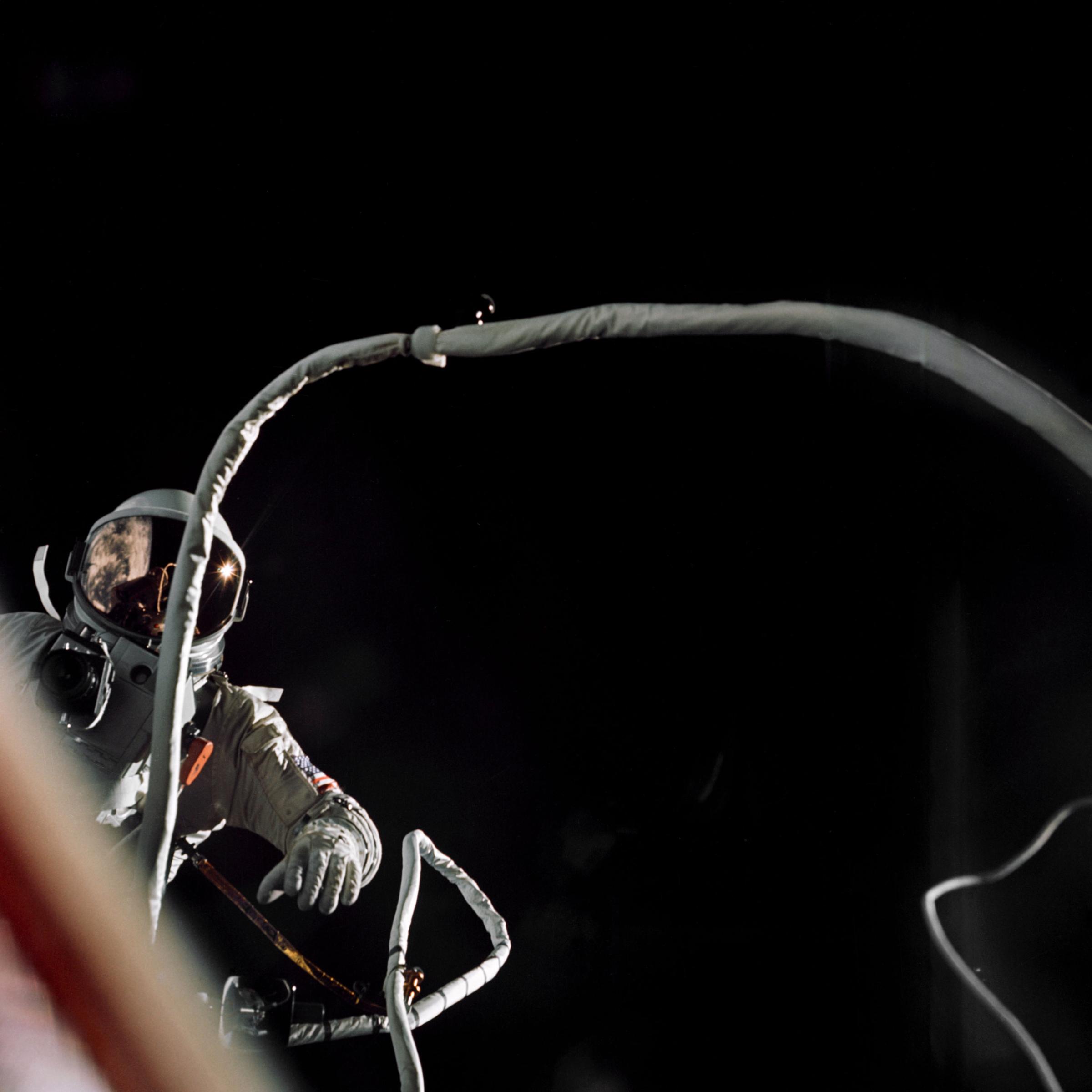
After Ed White’s grand time on Gemini 4, NASA expected Gene Cernan’s more-ambitious spacewalk on Gemini 9 to be a pleasure. It wasn’t. A maneuvering backpack was stashed in a storage area in the rear, outdoor portion of the spacecraft, but without any handholds on the ship to help him maneuver, Cernan mostly spun and snapped at the end of his tether. His heart rate soared to 155 beats per minute, his visor fogged up so badly he couldn’t see, and he had an even harder time than Alexei Leonov had re-entering his ship—describing it as akin to trying to put a champagne cork back in a bottle. EVAs, the space agency was learning, were far harder than they seemed.
November 13, 1966: Buzz Aldrin Soars on Gemini 12
The astronaut who was destined to become the second man on the moon made a smaller but no less relevant kind of history aboard Gemini 4, when he at last proved that spacewalking could be done efficiently and productively. Aldrin exited his spacecraft three times—twice for stand-up EVAs in which he remained partly inside—and once for more than two hours during a full, tethered walk. He took photographs, studied and mapped stars and picked up a micrometeorite sample collector. His combined 5 hours and 20 minutes of EVA blew the doors off of existing records.
Jan. 16 1969: Soviet Union Achieves First EVA Crew Transfer
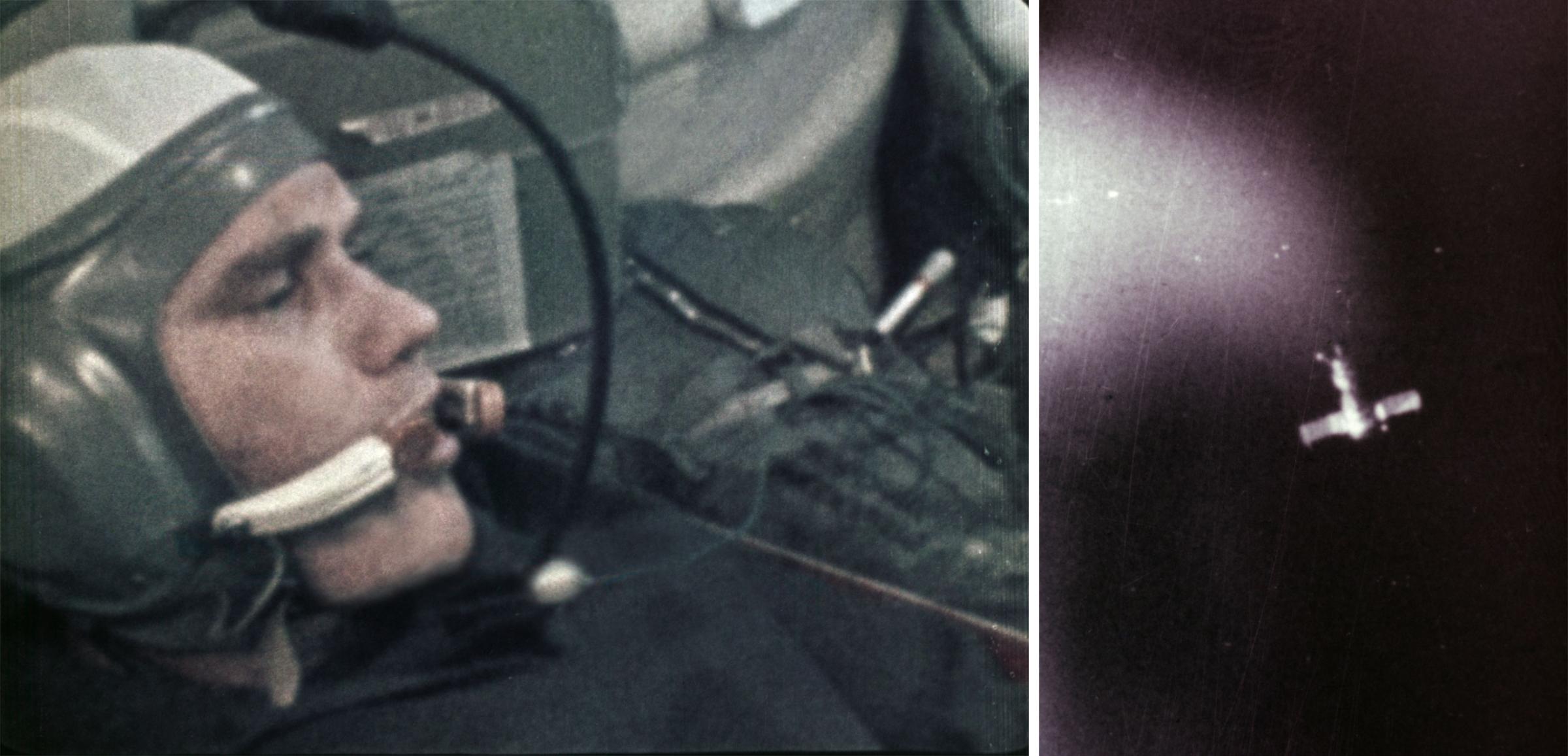
For Aleksei Yeliseyev and Yevgeny Khrunov, the joint mission of Soyuz 4 and 5 was a little like getting a lift to work in one friend’s car and coming home in another’s. The two cosmonauts launched with commander Boris Volynov aboard Soyuz 5, and then docked in orbit with Soyuz 4, commanded solo by Vladimir Shatalov. Yeliseyev and Khrunov then successfully performed the first spacewalk crew transfer, leaving their ship, floating over to Shatalov’s and climbing inside. They bet on the right horse. Volynov’s solo reentry aboard Soyuz 5 was miserable, with the service module at the back of the spacecraft failing to separate properly, the parachute lines tangling and the braking rockets intended to cushion the thump-down in the Kazakh steppes failing. Volynov survived, but flew across the cockpit and lost some teeth on landing.
July 21, 1969: Neil Armstrong and Buzz Aldrin Walk on Moon
History forgets the paradoxical smallness of the first lunar landing. Neil Armstrong and Buzz Aldrin were on the lunar surface for just 21 hours and 36 minutes. Their moonwalk—a solid-ground EVA—lasted less than two and a half hours. The area they explored was equally modest: if the landing area were a baseball field and the lunar module touched down on the pitcher’s mound, Armstrong and Aldrin never left the infield—except for one brief excursion Armstrong made to shallow right to look at a crater. But never mind. July 20, 1969 became a hinge point in history—the moment the first humans took the first toddling steps on another world.
August 5, 1971: Al Worden Makes First Deep Space EVA
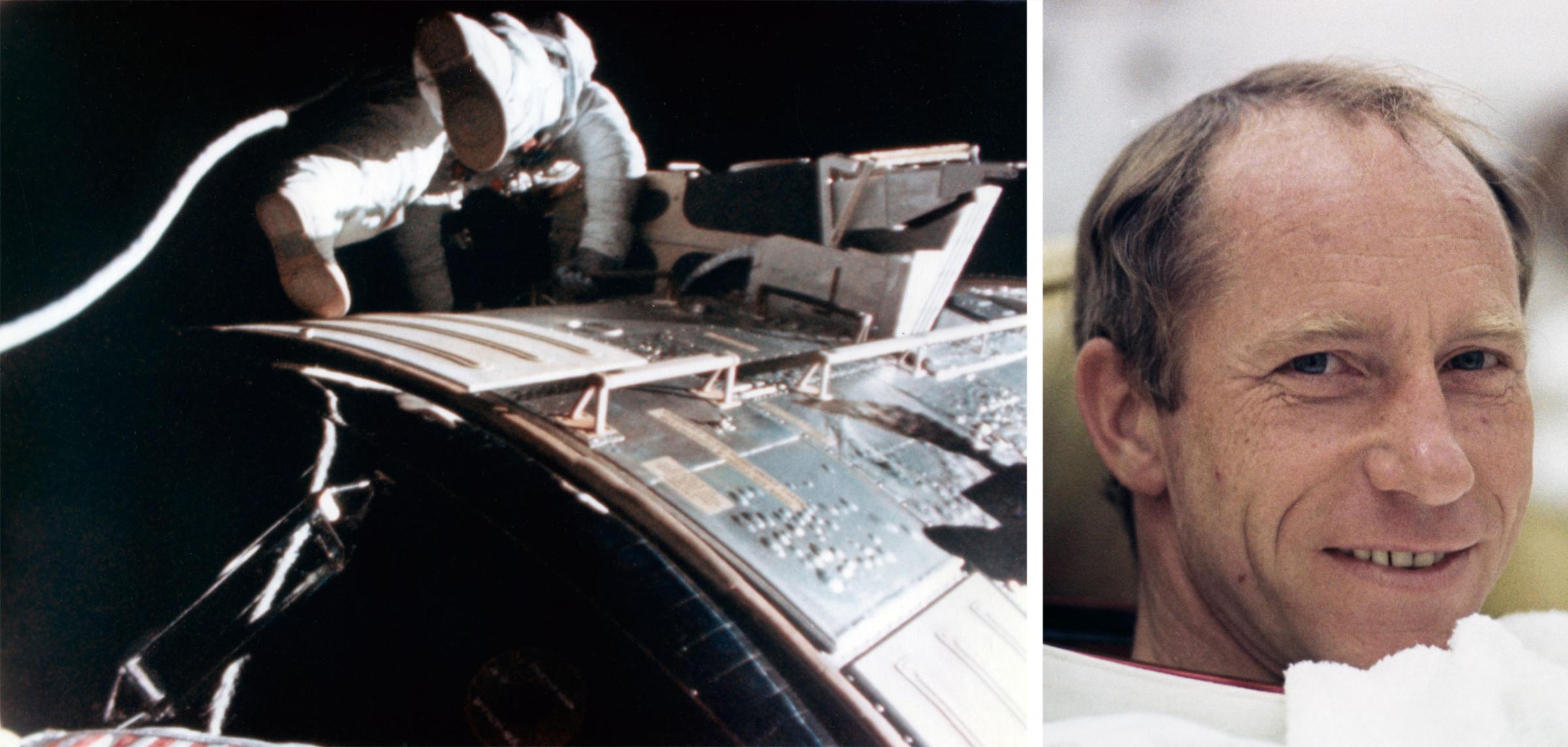
The center seat in an Apollo spacecraft was even less appealing than the center seat in a commercial aircraft. The guy in the middle was the one who’d have to stay aboard the command module while the other two astronauts went down to the surface of the moon. In the case of Al Worden, command module pilot of Apollo 15, that solo housesitting lasted three days. But Worden got his chance to stretch his legs on the flight home to Earth, when he made humanity’s first deep-space EVA, floating to the rear of the spacecraft to collect film canisters and exterior cameras and examine the overall condition of the service module. He was outside for just 38 minutes—not much compared to three days on the lunar surface, but not a bad way to spend even a small portion of the slow flight home.
May 26, 1973: Outdoor Housework on Skylab
Nobody pretended that after the thrill of the moon landings, it would be easy selling Americans on Skylab, the retrofitted third stage of a Saturn V booster that served as the country’s first space station. But that sales job proved even harder when Skylab was launched and arrived in orbit with a jammed solar panel and a damaged sun shield, which left the station both overheated and underpowered. Astronauts Pete Conrad, Joe Kerwin and Paul Weitz arrived eleven days later and set about putting things right. They fixed the sunshield problem from within the station, by poking a parasol-like device through a small airlock in the side of the ship and opening it up. But the solar panel required Conrad and Weitz to venture outside with what amounted to cable cutters and snip a strap keeping the solar wing closed. They succeeded—but when the wing snapped open, both astronauts were violently flung away from the ship. Their tethers held fast and they collected themselves and went, gratefully, back inside.
February 7, 1984: First Untethered Spacewalk
Finally, a spacewalk looked the way it was supposed to look. Since Alexei Leonov first stepped outside, every EVA had included safety tethers to keep the astronauts from floating away. But in 1984, astronaut Bruce McCandless eased himself away from the shuttle Challenger, steering about with the aid of a 300-lb. jetpack known in NASA-speak as the Manned Maneuvering Unit—or MMU. McCandless floated more than the equivalent of a football field away and if he felt any vertigo, he was entitled. Held aloft by nothing but physics, he could look down and see the Earth rolling by at four miles per second.
July 25, 1984: Cosmonaut Metal-Workers
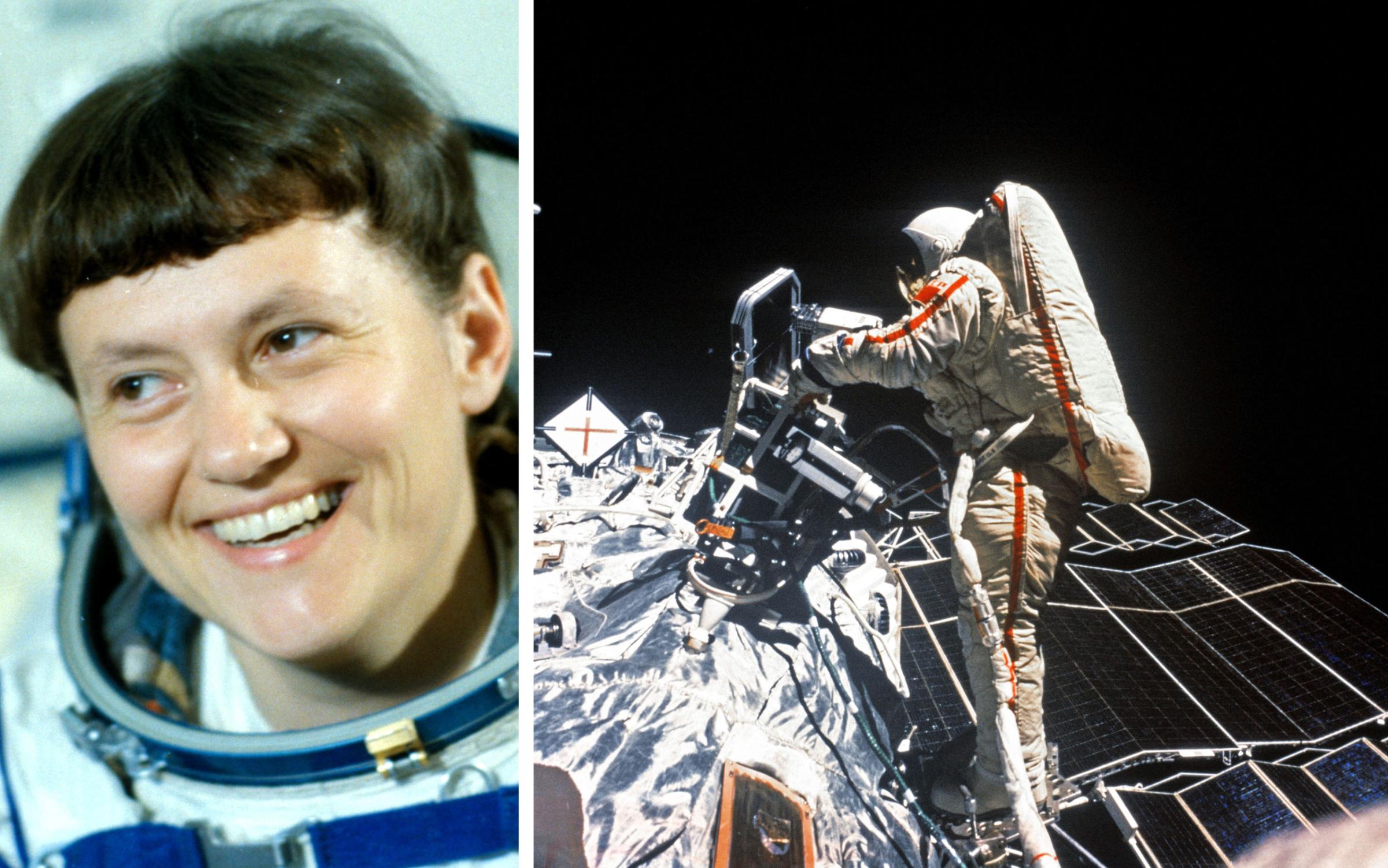
Spacewalks were always supposed to be about work—and that was especially so when it came to space stations. The Soviets’ early-generation Salyut stations were workhorses of longstanding, but that meant they’d need maintenance if they were to keep on flying. In the summer of 1984, Svetlana Savitskaya and Vladimir Dzhanibekov tested one of the most important repair methods ever, welding and brazing metal samples in the vacuum of space. The experiment worked, the system was proven and Savitskaya, in the process, became the first woman to walk in space.
May 13, 1992: First Three-Person Spacewalk
One of the biggest selling-points of the space shuttle was that it would enable in-orbit repairs of malfunctioning satellites, saving tens of millions of dollars and keeping the nation’s space infrastructure humming. Shuttle astronauts Pierre Thout, Richard Hieb and Thomas Akers proved that point in a big way when the shuttle Endeavour edged up to the disabled Intelsat 603 communications satellite and the three spacewalkers, standing in the open equipment bay, grappled it by hand. They secured the 4,215-lb mass, outfitted it with a new motor, and released it back into the orbital wild—once again fit and functioning.
Dec. 5, 1993: First Hubble Repair Mission
Never was a simple exercise in equipment repair so closely watched as when the shuttle Endeavour made its service call on the nearsighted Hubble Space Telescope. The $2.5 billion orbiting observatory was launched with enormous hoopla and then badly underperformed—thanks to a warped mirror. But Endeavour arrived with a fix in hand, and astronauts Story Musgrave and Jeffrey Hoffman made a record-setting five spacewalks over five days to get the rehab work done. The EVAs were broadcast live to Earth and a global—if selective—audience watch the hypnotically slo-mo space surgery. The scenery was beautiful, the handiwork was delicate, and the payoff—more than 20 years of dazzling images—was well worth the effort.
March 11, 2001: Longest Spacewalk in History
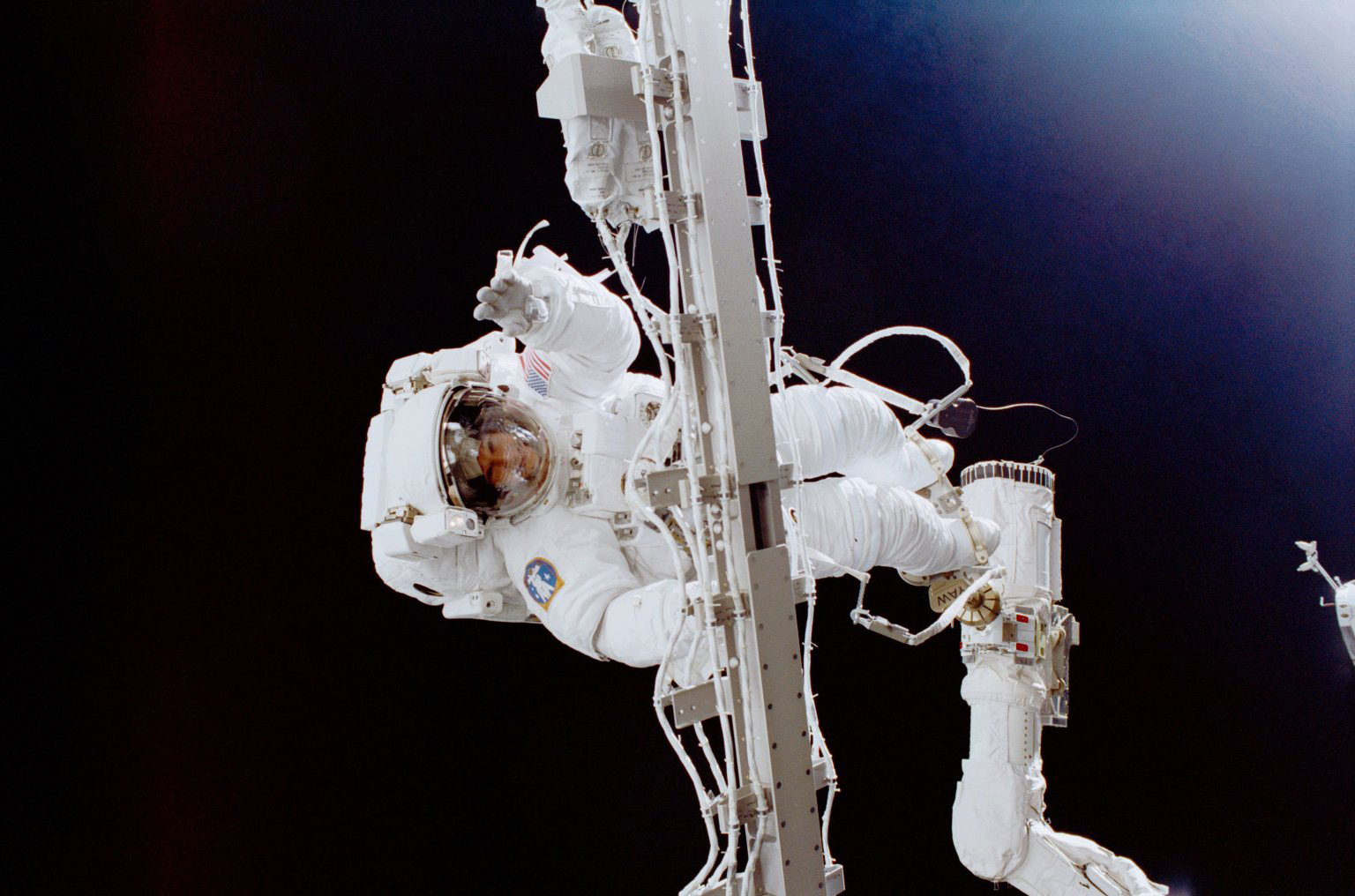
The International Space Station (ISS) is easily one of history’s great assembly projects, with 15 modules, some the size of a bus, snapped together in a dragonfly configuration. When one of those modules has to be relocated to another spot on the spacecraft, the work can be painstaking. That’s what astronauts Susan Helms and James Voss learned when they ventured outside the ISS to prep the Multi-Purpose Logistics Module for a move, and didn’t step back inside for 8 hours and 56 minutes—a record that still stands. That is 5.95 laps around the world—or 148,900 miles logged—and one very big job completed.
August 3, 2005: First In-Flight Repair of Space Shuttle
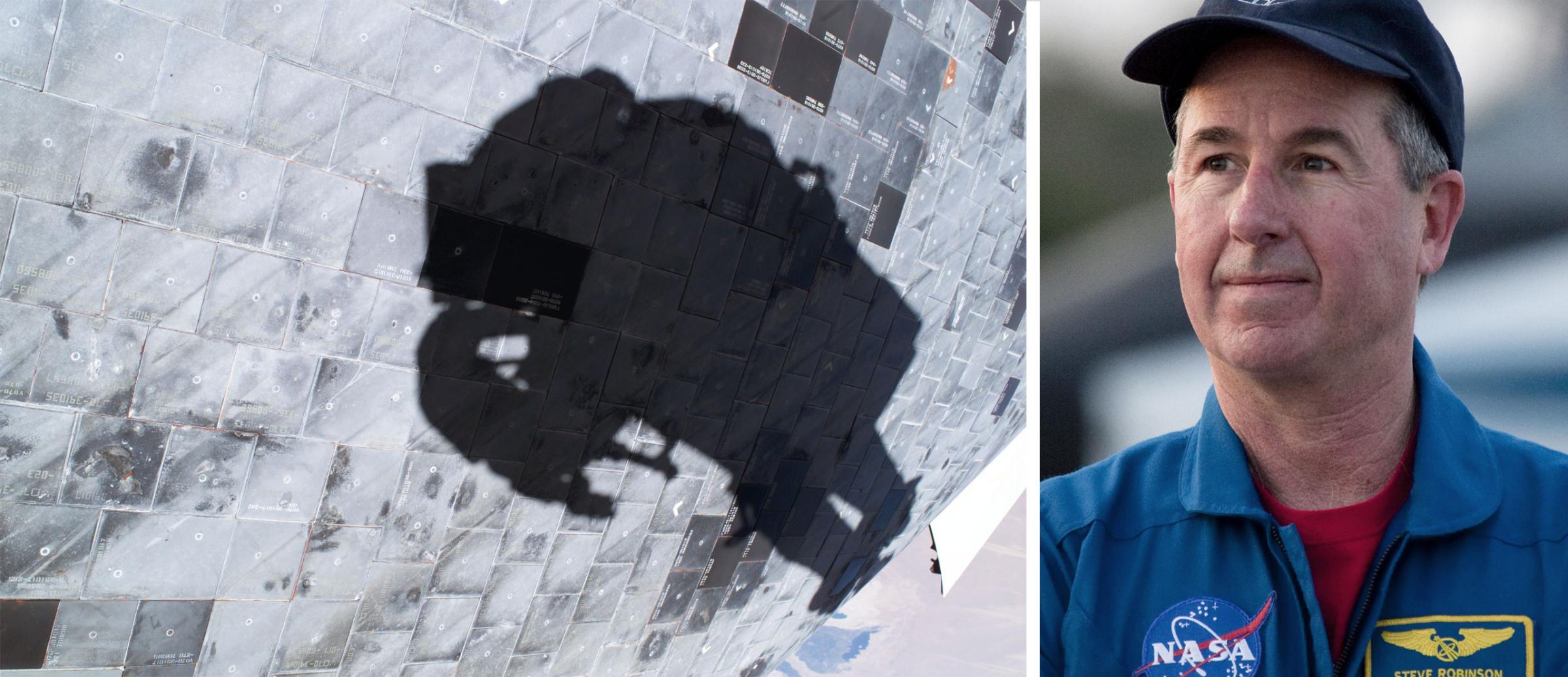
The space shuttle was built to do repairs in orbit, but at some point it was inevitable that it would be the object of repairs too. That was more important than ever when the shuttle Discovery went aloft in July 2005, the first mission to fly after the tragic loss of the shuttle Columbia. It was damage to Columbia’s heat shielding that doomed the ship during reentry, and loose tiles on the underside of Discovery pose a similar risk—if a far smaller one. But this was a chastened NASA and a small risk would not be tolerated. So astronaut Steve Robinson ventured outside to affect a repair—helping to ensure that a shuttle program that had already seen so much suffering would see no more.
What’s Next?
This year, astronaut Scott Kelly will perform spacewalks to reconfigure the International Space Station for the arrival of more commercial vehicles during his yearlong mission.
More Must-Reads from TIME
- L.A. Fires Show Reality of 1.5°C of Warming
- Home Losses From L.A. Fires Hasten ‘An Uninsurable Future’
- The Women Refusing to Participate in Trump’s Economy
- Bad Bunny On Heartbreak and New Album
- How to Dress Warmly for Cold Weather
- We’re Lucky to Have Been Alive in the Age of David Lynch
- The Motivational Trick That Makes You Exercise Harder
- Column: No One Won The War in Gaza
Write to Jeffrey Kluger at jeffrey.kluger@time.com